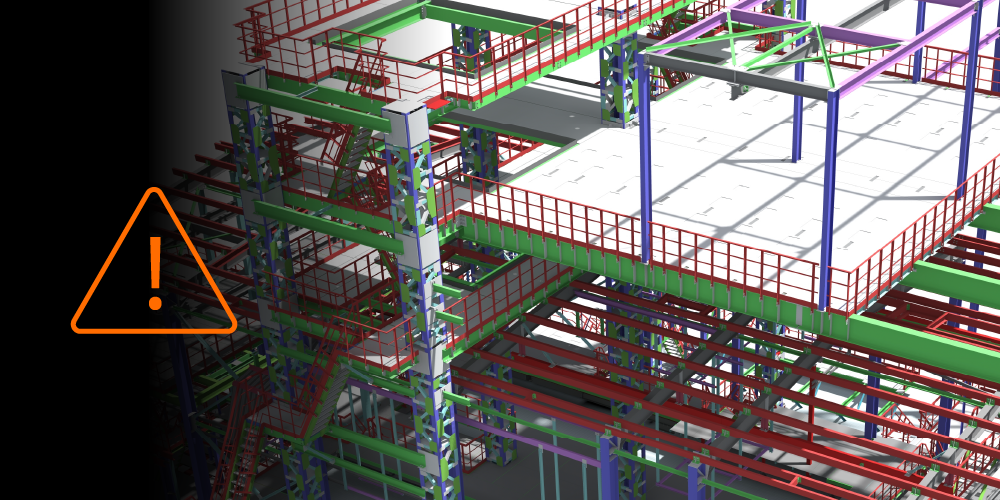Related Articles
— 9 min read
Work in Progress (WIP) Reports in Construction: What They Are and Why They Matter

Last Updated Oct 30, 2025

Josh Krissansen
48 articles
Josh Krissansen is a freelance writer with two years of experience contributing to Procore's educational library. He specialises in transforming complex construction concepts into clear, actionable insights for professionals in the industry.
Last Updated Oct 30, 2025

In Australian construction, millions can disappear from a project’s bottom line before anyone notices. Without accurate Work in Progress (WIP) construction reporting, margin erosion, delayed interventions, and misaligned billing can go undetected until they have already damaged the job.
For senior project teams, this is not just an accounting exercise. It is a leadership function. Accurate, timely WIP reports connect the realities of site progress with the numbers that drive decisions, safeguard profitability, and maintain trust with owners, financiers, and auditors.
This article examines how to build WIP construction reporting into the core of project governance. It outlines the critical inputs, calculation methods, and review processes that turn raw data into strategic insight, and the common pitfalls that erode financial control before they are visible on the balance sheet.
Table of contents
What is Work in Progress (WIP) in Construction?
Work in Progress (WIP) is a construction accounting method that tracks project costs and earned revenue as work is performed. WIP reports, or WIP schedules, compile this data across active projects to show how actual performance aligns with budgets and delivery programs.
Used consistently, WIP reporting ensures financial statements reflect the true status of each job.
Why Do WIP Reports Matter in Construction?
WIP construction reports give commercial builders a real-time financial lens on project delivery. Aligning actual costs and earned revenue with progress on site supports AASB 15 compliance and strengthens cash flow forecasting, billing accuracy, and risk control across active jobs.
Improve Cost Control and Forecasting
WIP reports track actual costs against budget in real time, exposing overruns, procurement issues, or scope changes before they squeeze margin.
Reliable data sharpens forecasts for total project cost and gross profit, allowing teams to adjust for rising material prices, subcontractor rate changes, or rework requirements before they escalate.Strengthen Cash Flow and Billing Accuracy
Comparing billed revenue with earned value highlights underbilling that can strain cash flow and overbilling that can mask financial risk. Aligning invoices with verified progress reduces the chance of disputes, payment delays, or write-downs.
Monitor Project Health in Real Time
WIP reporting adds a financial lens to project tracking, making it easier to detect delays, procurement issues, or scope changes affecting delivery. It gives commercial teams faster insight into where a job is deviating from plan, helping link on-site activity with financial outcomes and enabling quicker, better-informed decisions.
Mitigate Financial and Delivery Risk
Accurate WIP data highlights margin erosion, delivery risks, or operational underperformance before they affect business viability.
This reduces the likelihood of insolvency triggers such as inaccurate billing or overstated revenue and helps enforce commercial governance, especially on complex, multi-phase, or high-value jobs.Increase Stakeholder Confidence
WIP reports provide external stakeholders with consistent, transparent financial information. Owners, banks, and auditors can see how revenue aligns with delivery, while internal teams stay accountable through shared visibility.
This reinforces confidence that each job is managed to commercial and regulatory standards.
What’s Included in a Construction WIP Report?
Contract Value
This is the total value of the contract, including any approved variations. It’s the reference point for calculating earned revenue and assessing financial progress.
Original Estimated Cost
The baseline cost estimate is prepared before construction begins. This figure may be updated over time to reflect change orders or scope adjustments and is used to evaluate budget performance.
Actual Cost to Date
The total amount spent on the project at the time of reporting. It includes direct costs such as labour and materials, subcontractor invoices, and allocated overhead. This figure is essential for calculating percentage complete.
Billed Revenue to Date
The cumulative amount invoiced to the client. Comparing this to earned revenue reveals whether the project is over-billed or under-billed, which affects cash flow and financial management.
Percentage Complete
This is most commonly calculated by dividing the actual cost to date by the current estimated total cost. Sometimes, it may also reflect site progress or quantity tracking where cost-based data is unavailable or unreliable.
Earned Revenue (Earned Value)
The amount of revenue that can be recognised based on work performed. It is calculated by multiplying the contract value by the percentage complete. This figure is central to revenue recognition and margin forecasting.
Over or Under-Billing Amount
This shows the difference between earned revenue and billed revenue. Over-billing can artificially inflate cash flow and profit, while under-billing may create working capital pressure or delay recovery of incurred costs.
Cost to Complete (Optional)
Some reports include a projection of the remaining costs for finishing the job. This is calculated by subtracting actual costs to date from the revised estimated total cost. It provides an early indication of whether the project is trending toward or away from the expected margin.
How to Calculate WIP and Manage the Reporting Process
WIP reporting begins by calculating how much of the job is complete, determining how much revenue has been earned, and comparing that to what has been billed. The process depends on accurate project data, consistent inputs, and a structured review cycle.
Calculate Percentage Complete
Divide the actual costs to date (found in the cost report) by the current estimated total cost. This gives a percentage that reflects how much of the job has been delivered based on financial performance. Cost tracking is effective when it is reliable and updated regularly.
Calculate Earned Revenue
Multiply the percentage complete by the total contract value, including approved variations. The result is the revenue the business is entitled to recognise based on work performed.
Identify Over or Under-Billing
Compare earned revenue to invoiced revenue. If earned revenue is higher, the project is underbilled; if lower, it is overbilled.
Example: A $1M contract is 50% complete (earned revenue $500K). If invoiced $400K, it’s underbilled by $100K. If invoiced $600K, it’s overbilled by $100K.Generate the WIP Report
Collect the latest figures for contract value, revised estimated total cost, actual costs incurred, and total invoicing. Input the data into the WIP schedule or reporting tool.
Use it to calculate percentage complete, earned revenue, and billing variance. Identify any jobs showing significant margin movement, billing discrepancies, or unplanned cost escalation.Review and Act
Review WIP reports monthly or in sync with billing cycles. Escalate jobs with significant variance for intervention, and use findings to adjust forecasts, correct billing, and inform planning.
Common Mistakes in WIP Accounting (and How to Avoid Them)
Most WIP reporting errors come from process gaps, inconsistent data, or poor coordination between project teams and finance. These issues can be prevented with defined ownership, disciplined processes, and integrated systems.
Infrequent or Inconsistent Reporting
Irregular WIP reporting creates blind spots. Margin slippage, billing delays, and delivery issues often go unnoticed until the impact is already material.
WIP reports should be prepared for every active project on a fixed monthly cycle. Tie the reporting cadence to internal billing periods and make WIP part of the month-end close.
Assign project leads and finance responsibility, with scheduled review meetings to identify and action variances. Use templates to standardise inputs and embed WIP into the broader financial reporting framework.
Incomplete or Inaccurate Data Entry
Missing labour hours, late subcontractor costs, or incorrect variation figures distort earned revenue and billing status. Manual spreadsheets and disconnected tools increase the likelihood of errors.
Centralise data collection by integrating WIP reports with core systems, such as timesheets, purchase orders, and contract administration platforms. Apply logic-based validations to flag anomalies before submission.
Before it is accepted as final, every report must pass a dual review process: one by the project team and one by commercial or finance.
Failure to Update Budgets and Estimates
WIP reporting loses accuracy when change orders are approved but cost estimates are not updated. This is particularly damaging on long-duration or highly variable projects.
Enforce a policy requiring an immediate update to the total estimated cost for any approved scope change. The project team should submit revised forecasts with supporting documentation.
Finance should update the WIP schedule and annotate changes to ensure the report remains auditable and aligned with current delivery conditions.
Overbilling Treated as Profit
Overbilling supports cash flow but does not represent earned value. Treating it as margin inflates profit and can result in poor financial decisions.
Overbilling should always be recorded as a liability on the balance sheet and separated from earned revenue in internal reporting. Finance teams must ensure that overbilled amounts are excluded from margin calculations and flagged in monthly commentary.
Commercial teams should be trained to understand the distinction and manage billing strategies accordingly.
WIP Not Integrated into Financials
When WIP reports are produced outside the accounting system, they create gaps between operational insight and statutory reporting, weakening governance and decision-making.
All over- and under-billings must be reconciled within the general ledger each month.
Underbillings should be recorded as accrued revenue or current assets, and overbillings should be recognised as deferred income or current liabilities.
Finance and delivery stakeholders should document, review, and sign off on the reconciliation process.
Misapplying Percentage of Completion
Inconsistent calculation methods across projects undermine the integrity of WIP data. It becomes unreliable when the percentage complete is based on subjective opinion or rough site estimates.
Establish a single calculation method for all projects using actual costs divided by revised estimated costs. Support alternate methods with quantity surveyor certifications or approved site measures, where this isn’t possible.
Disclose the methodology used in each WIP report and ensure project teams apply it consistently.
Lack of Documentation or Notes
WIP reports without supporting context leave decision-makers guessing. Unexplained shifts in margin or completion rates reduce trust in the data.
Each WIP schedule should include explanatory notes outlining progress, changes made since the last report, and the rationale behind any cost or revenue movements. The project team should prepare and review this commentary with finance before submission.
Treat the WIP schedule as a source document within the financial reporting process, not just a working file.
WIP reports drive financial control and delivery performance
Work in progress reports give commercial builders the structure needed to align revenue recognition, cost forecasting, and billing accuracy across live projects.
When built into monthly cycles and reviewed with discipline, WIP reporting becomes a powerful control point for protecting margin and avoiding downstream financial risk.
Categories:
Written by

Josh Krissansen
48 articles
Josh Krissansen is a freelance writer with two years of experience contributing to Procore's educational library. He specialises in transforming complex construction concepts into clear, actionable insights for professionals in the industry.
View profileExplore more helpful resources

Managing Direct Costs in Construction: How Visibility Drives Profitability
Direct costs define the financial reality of every construction project. They cover the labour, materials, and equipment that drive delivery and determine profitability. But even the best-planned budgets can shift...

BIM Clash Detection: Reducing Rework, Delays, and Risk in Construction
Design clashes can be a significant hidden cost in construction, as each conflict between systems risks expensive rework, project delays, and reduced margins. BIM clash detection empowers teams to identify...

Next-Gen Job-Costing: Ready to Move? 5 Things to Consider Before You Get Started
In this three-part series, Quantity Surveyor turned Financial Solutions Specialist Clint Burgess uncovers the real-world gains for people, processes, and profits when businesses move from legacy to next-generation Enterprise Resource...

From Workarounds to Workflow: Solving Construction’s Legacy Job-Costing System Challenges with Next-Gen Tools
In this three-part series, Quantity Surveyor turned Financial Solutions Specialist Clint Burgess uncovers the real-world gains for people, processes, and profits when businesses move from legacy to next-generation Enterprise Resource...
